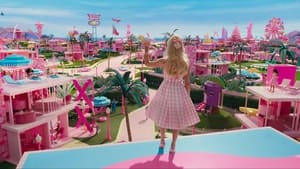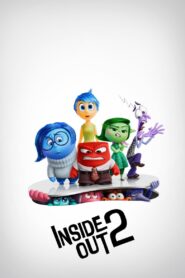
Video Sources 576 Views Report Error

Synopsis
Based on the aesthetic history of dolls, the first part of the film takes place in Barbie Land, where the self-proclaimed “stereotypical Barbie” (played by Margot Robbie) and other Barbies live in a peaceful paradise. average, engaging in a variety of pursuits. . and recreational activities. Their partners, Kens, do nothing but “beach” and act as platonic companions for the Barbies (when they want to). These scenes are full of clever humor and nostalgia for those who remember playing with Barbie: Just like in our games, Barbie never uses the stairs, only pretends to drink water and say “Hello Barbie!” to every other doll in sight.
Barbie and Ken are having the time of their lives in the colorful and seemingly perfect world of Barbie Land. However, when they get a chance to go to the real world, they soon discover the joys and perils of living among humans.
The promotion worked because it tapped into an existing market of people who grew up with Barbie. Created in 1959 as one of the first grown-up woman dolls for children, the affordable toy has been a controversial yet beloved plaything for decades. Like many in the audience, the two of us played with Barbies as little girls, and therefore had firsthand access to the complicated influence that such a doll—who is anything she wants to be while always looking perfect—can have on a young girl.
Barbie’s stereotypical cheerful innocence is interrupted one morning when she begins to develop low self-esteem and anxiety, accompanied by frighteningly flat legs and “thoughts of death”. To return to her former self, Barbie must venture into the “real world” where she is immediately sexualized and objectified, accused of being a fascist by teenagers, and imprisoned for assault after punching a man who had offended.
The main takeaway from “Barbie” is that a real woman’s life is significantly more difficult but decidedly more interesting than the “plastic life” ever could be. Tweet this
The film follows a hero’s journey, complete with a car chase and rise to leadership, as Barbie tries to shake off her emotional turmoil – and in the end, as she tries to tries to save Barbie Land by Ken (Ryan Gosling), who has had a much better time in the real world and decides to bring the patriarchy back to Barbie Land with him.
But while the dolls and their conflicts (filled with jokes taken from Barbie’s story) are certainly the funniest and most exciting part of the film, the human characters in the film, especially especially Gloria, a Mattel employee played by America Ferrera, and her daughter Sasha. , performed by Ariana Greenblatt, shifts the focus from analysis of the doll to an exploration of femininity.
When Gloria and Sasha discover they are responsible for Barbie’s strange behavior, they try to help the doll achieve stability for herself and her community. In doing so, audiences will be treated to a moving exploration of what it means to grow up as a woman, from the perspective of mother and daughter.
The film is almost painfully about the struggles women face, voicing a certain exasperating frustration that seems so obvious, but for many who responded to the film, it had seems right. While Barbie is willing to wallow in self-pity and give in to existential fear, Gloria encourages Barbie to forgive herself for her mistakes and imperfections, and to express all her expectations Incredible for modern women. “It’s too difficult,” she says of femininity, “it’s too contradictory.” The stereotypical Barbie looked at her with wide eyes and Gloria’s daughter gave a surprised smile. By giving voice to the emotions that sparked this journey, Gloria allows Barbies to reclaim Barbie Land.
Original title Barbie
IMDb Rating 7.7 22,394 votes
TMDb Rating 7.671 970 votes
Director
Director
Cast
Barbie
Ken
Gloria
Sasha
Weird Barbie
Mattel CEO
Allan
Ken
President Barbie
Comments are closed.































